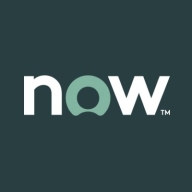

Nagios XI and Loom Systems are competitors in the IT monitoring and analytics industry. Loom Systems appears to have an advantage due to its advanced AI-driven capabilities, offering a more comprehensive feature set that aligns with modern IT needs.
Features: Nagios XI offers in-depth monitoring, extensive plugin support, and a customizable modular design. Loom Systems provides predictive analytics powered by machine learning, advanced insights, and automated anomaly detection.
Room for Improvement: Nagios XI could enhance its feature set with more automation and AI functionality, improve user-friendliness, and reduce configuration complexity. Loom Systems might consider lowering its initial cost, increasing ease of integration with existing systems, and expanding its feature documentation.
Ease of Deployment and Customer Service: Nagios XI provides a straightforward deployment but often requires expertise for optimal configuration, paired with detailed documentation and responsive support. Loom Systems offers a cloud-based deployment model, reducing installation complexity with proactive and adaptive support for modern IT environments.
Pricing and ROI: Nagios XI features competitive pricing and scalable setup costs, appealing to budget-conscious businesses with notable ROI due to low overhead. Loom Systems involves a higher initial investment but offers significant ROI through AI-driven efficiencies and reduced operational downtime.
| Product | Market Share (%) |
|---|---|
| Nagios XI | 3.0% |
| Loom Systems | 0.6% |
| Other | 96.4% |


| Company Size | Count |
|---|---|
| Small Business | 22 |
| Midsize Enterprise | 17 |
| Large Enterprise | 21 |
Nagios XI provides monitoring of all mission-critical infrastructure components, including applications, services, operating systems, network protocols, systems metrics, and network infrastructure. Third-party add-ons provide tools for monitoring virtually all in-house and external applications, services, and systems.
Nagios XI uses a powerful Core 4 monitoring engine that provides users with the highest levels of server monitoring performance. This high degree of performance enables nearly limitless scalability and monitoring powers.
With Nagios XI, stakeholders can check up on their infrastructure status using the role-based web interface. Sophisticated dashboards enable access to monitoring information and third-party data. Administrators can easily set up permissions so users can only access the infrastructure they are authorized to view.
Nagios XI Benefits and Features
Some of the benefits and top features of using Nagios XI include:
Reviews from Real Users
Nagios XI stands out among its competitors for a number of reasons. Several major ones are its integration options and monitoring abilities, as well as its alerting features.
David P., a senior DevOps engineer at EML Payments Ltd, writes, “We use Nagios as a network discovery tool. We use Nagios to maintain our uptime statistics and to monitor our services. It has allowed us to be much more sophisticated in our monitoring and alerting.”
An IT-OSS manager at a comms service provider notes, “Nagios XI has a custom API feature, and we can expose custom APIs for our integration. This is a great feature.”
We monitor all IT Infrastructure Monitoring reviews to prevent fraudulent reviews and keep review quality high. We do not post reviews by company employees or direct competitors. We validate each review for authenticity via cross-reference with LinkedIn, and personal follow-up with the reviewer when necessary.